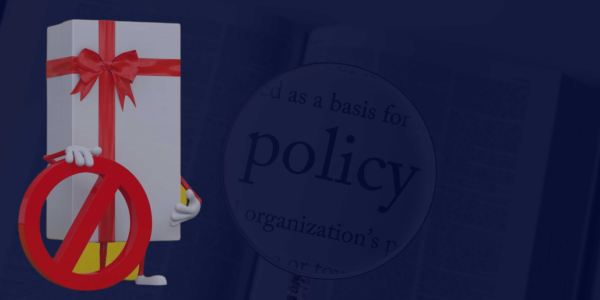At some point, the Internal Committee (IC) is bound to face the challenge of determining what constitutes a ‘workplace’ beyond the traditional office setting. The concept of a ‘workplace’ has evolved over time and can now encompass any place where a working relationship exists. However, it is crucial for ICs to identify which situations can be considered as a workplace to ensure that their authority in conducting investigations remains unquestioned in case of appeals.
Understanding the Objective of the Sexual Harassment of Women at Workplace (Prevention, Prohibition and Redressal) Act, 2013 (“PoSH Act”)Before delving into the interpretation of a ‘workplace’ under the PoSH Act, it is essential to first understand the objective of the Act and other relevant provisions constituting a workplace:
- The objective of the Act: The PoSH Act is rooted in the recognition that sexual harassment infringes upon a woman's fundamental rights of equality, life, and dignity. The preamble of the Act emphasizes the importance of providing women with a secure and conducive environment that is free from the scourge of sexual harassment.
- Section 2(o) defines ‘workplace’ to include traditional office/working spaces and any place visited by an employee arising out of or during the course of employment including transportation provided by the employer for undertaking such journey, among other things. The latter, in essence, provides for the concept of an “extended workplace”.
- Section 3 considers “interference with her work or creating an intimidating or offensive or hostile work environment” as amounting to sexual harassment.
Although the definition of ‘workplace’ is wide, the objective of the PoSH Act read along with the listed provisions, gives us the understanding that the framers of the Act intended it to be a solution in providing a safe environment for women at workplaces – regardless of the scope or nature of that environment.
How Courts have viewed “Workplaces”
Even before the PoSH Act came into force in 2013, the High Court of Delhi in 2008 said that the definition of ‘workplace’ should not have to be narrowed down and constricted, and should be interpreted for achievement of the object sought to be achieved, which is to protect working women from sexual harassment. [Saurabh Kumar Mallick v. The Comptroller & Auditor General of India & Another].
In 2012, the Calcutta High Court said that “workplace” should be given a broader and wider meaning so that the guidelines (Vishaka Guidelines) can be applied where needed, to deal with sexual harassment and create a congenial atmosphere for women [Ayesha Khatun vs. The State of West Bengal and Ors.].
In 2013, the Bombay High Court recognized the definition of “workplace” under the PoSH Act to be inclusive and deliberately kept wide by the Parliament to ensure that any area where women may be subjected to Sexual Harassment is not left unattended or unprovided for. [Jaya Kodate vs. Rashtrasant Tukdoji Maharaj Nagpur University].
While an exhaustive list of workplaces cannot be made, the High Court of Sikkim recognized that the ambit and scope of “workplace” as specified in Sec 2(o) of the Act can be decided after considering the evidence brought before the IC [Silajit Guha vs. Sikkim University and Ors].
With hybrid work cultures now a reality, Courts have recognized virtual workspaces to be a form of extended workplace [Sanjeev Mishra vs The Disciplinary Authority and Ors.].
Navigating Complex Workplace Scenarios
Consider the following scenarios. Can an IC decide on these cases of sexual harassment?
Scenario 1:
Ashwini is a Senior Manager at XYZ Co. Rakesh is a junior associate in another team at the same organization. As a matter of policy, the company assigns official numbers for employees to use for work. Rakesh manages to get Ashwini’s personal number from one of her reportees and texts her late one night expressing his admiration for her and her work. Ashwini reports Rakesh’s conduct to the IC. [Facts adapted from Jahid Ali vs Union of India & Ors.]
Scenario 2:
A male colleague often dropped a female colleague home after work since they lived in the same neighborhood. After a few weeks, she raised a complaint with the IC alleging sexual harassment on her journey home.
Scenario 3:
ABC Pvt. Ltd., a startup established during the pandemic, chose to work out of a co-working space after their total number of employees exceeded 10. During lunch, an employee of another company working out of the same premise, made inappropriate advances towards a female employee of ABC Pvt. Ltd. in the common cafeteria.
Scenario 4:
A male customer made inappropriate comments with sexual overtones against a female food delivery executive in his apartment corridor.
Scenario 5:
During a long weekend, a group of 4 (four) team members embarked on an unofficial trekking trip. However, an unfortunate incident unfolded when one of the colleagues made unwelcome sexual advances towards a female colleague during a break from the trek.
Scenario 6 :
2 (two) employees who were in a consensual romantic relationship had a sour breakup. A few weeks later, the male employee dropped in at the female employee’s home and physically assaulted her.
Scenario 7:
Ayesha’s company reimburses cab fares taken for client meetings. On one occasion, Ayesha was on the phone while in a cab and she noticed the cab driver ogling at her and making inappropriate gestures.
Solution: All of the listed scenarios have an element of sexual harassment as defined under the PoSH Act, However, can each of them be considered as Workplace Harassment, for the IC to pursue an inquiry?
It wouldn’t be appropriate to give an overarching yes to all of the listed scenarios. However, each of them could be a potential case of Sexual Harassment at the Workplace. A few factors that the IC should take into consideration include:
- Was there a working relationship between the parties arising out of or during the course of employment?
- If it seems like an isolated incident not concerning the workplace per se, was it part of a continuing offense (i.e., an offense committed over a period of time that constitutes a fresh offense) against the complainant and/or what potential impact did/does it have on the work environment of the complainant?
- Can the offense be related back to the Workplace?
It would be pertinent to add that if the IC feels that the complainant would not get a justified redressal from the IC, they (or the employer) can assist the complainant to file a First Information Report (FIR) with the local police.
Final Thoughts
Tying together all that we’ve considered, as a best practice, ICs must make the effort to keep abreast of how ‘workplace’ has been interpreted, through research, knowledge sharing, and training. ICs must take the time to understand the responsibility and freedom granted to them by the PoSH Act and how the efficient fulfillment of this responsibility can ensure a safe working environment, protecting the life, liberty, and dignity of women in workplaces.
DISCLAIMER – No information contained in this website may be reproduced, transmitted, or copied (other than for the purposes of fair dealing, as defined in the Copyright Act, 1957) without the express written permission of Rainmaker Online Training Solutions Pvt. Ltd.











